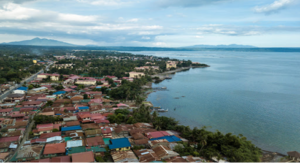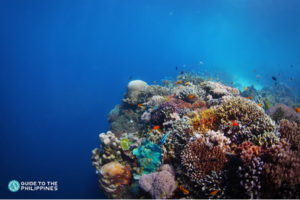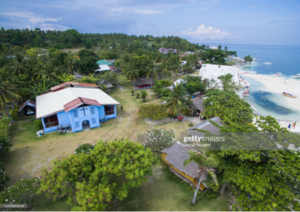Reforming the service industry to serve people.
By Frank Mabalatan
Introduction
Tourism has long been the biggest industry in archipelagic Philippines, prompting the Filipino Congress to enact the Tourism Act of 2009, which confirms a federal commitment to the tourism industry by welcoming international investment and prioritizing the hiring of Filipino workers. As a country known for exporting workers abroad, Filipinos recognize the opportunity to use the tourism industry to keep jobs and workers within the country and develop a stronger economic infrastructure. However, Filipinos have begun to question how these developments are changing both the physical and socio-economic landscape of the county, leading to urban sprawl and threats to marine protected areas (Abanilla-Del Mundo, 2019; Christie, White, Deguit, 2002).
One response to this large-scale tourism development is community-based tourism (CBT), which seeks to return agency to Filipinos who reside in these tourist destinations. In Abanilla-Del Mundo’s 2019 study of 400 community members of Batangas province, she found that democratization efforts in the beach tourism industry in the province led to local community members becoming highly involved in the peace and security, marketing and management, and environmental protection divisions of tourism ventures. Abanilla-Del Mundo found that community members were willing to organize and administer new emergency services, formulating ordinances and laws on tourist security, organizing festivals and events, and preserving the surrounding marine environment. This is a departure from the historical method of having developments and hospitality firms fill this responsibility, limiting community members to only fulfill service roles.
Analysis

Batangas City, Centre for Sustainable, Healthy, and Learning Cities and Neighborhoods

Club Laiya in Batangas, Rod Magaru, Flickr
Shamsuddin and Ujang (2008) explain that “[a]ttachment to the traditional shopping streets [in Malaysia] was more prevalent to the users who were economically dependent on the area and marked their presence through constant interaction and long-term association” (p. 403). This idea of place attachment is particularly important in the case of Batangas and other beach tourism areas in the Philippines, in part because of local communities’ economic dependence on the tourism industry and the intimate impacts of tourism on residents’ lives. To counter the threats to traditional place-making and attachments to place and community stemming from tourism, CBT places the responsibility of tourism management on local community members, allowing them to more effectively shape the development of the industry. CBT thus can be understood as a restorative developmental practice based on cultivating traditional place attachment among residents. In the period of tourism development before CBT, archipelagic communities lost attachment to their communities because of the developers’ monopoly over management and administration, but CBT restores that place attachment by providing more control to residents.
The impact of CBT is illustrated by the efforts to enforce marine-protected areas (MPAs) to maintain the ocean’s biodiversity. The drastic landscaping required to build beach developments and the attendant increase in fishing puts a severe strain on the marine ecosystem surrounding these islands. To contend with these problems, in 1985-86 local residents and officials established small, no-take MPAs on Balicasag and Pamilacan Islands through a community-based process. Conservationists have been diligently managing the MPAs since then, collaborating with their municipal governments to enforce bans on damaging processes such as blast fishing and disruptive scuba diving. As the example of the Balicasag and Pamilacan islands suggests, a coordinated effort between local community members, municipal officials, and dive tourist entrepreneurs is required to maintain the biodiversity of the marine ecosystem Christie, White, Deguit, 2002). This coordination between community members, scientists, and local governments creates a new attitude towards tourism in the interest of environmental preservation, reflecting the ideas of self-governance proposed by Nunbogua et al. (2018). Additionally, this coordination illustrates the significance of mobilities as articulated by Simone (2004), i.e. “the capacity of individual actors to circulate across and become familiar with a broad range of spatial, residential, economic, and transactional positions” (p. 408) provided the connections necessary to effectively develop and maintain MPAs.

Balicasag Reef, Guide to the Philippines

Pamilacan Island, Jacob Maentz, Getty Images
Implications
The Filipino tourism industry has a potent impact on the country’s economy, providing an opportunity to take advantage of the country’s natural resources to transition into a more diverse national economic profile. However, a difficult balance must be struck between the leveraging of the tourism industry and the well-being of the local communities and the environment where these tourist ventures are being developed. A service industry such as tourism has the potential to transform a place or a locality into an environment that is totally in the service of these groups and not those who live in these communities. Community-based tourism and marine protection are crucial methods for returning agency to communities in the face of rapid tourist development.
Community members of archipelagic Philippines have struggled with a loss of place attachment because of their economic dependence on the tourism industry and the negative impacts of beach tourism on their communities. However, as Shamsuddin’s and Ujang’s (2008) definition of long-term interaction suggests, CBT has now provided an opportunity to regain their place attachment. The reclamation of agency and control through managerial and administrative positions in tourist ventures in the Province of Batangas and the MPAs of the Balicasag and Pamilacan Islands illustrate Nunbogua et al.’s (2018) concept of community self-governance and Simone’s (2004) idea of mobilities, whereby structures of self-governance are developed through forging connections with external actors. Ultimately, CBT provides residents with an opportunity to regain control of their communities while at the same time ensuring that the tourism industry, built on their land and natural resources, is preserved to benefit community members.
